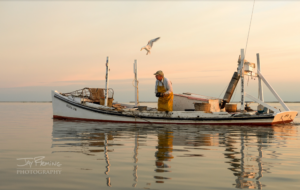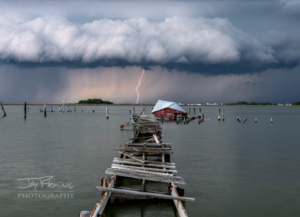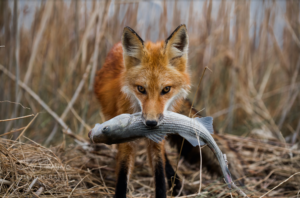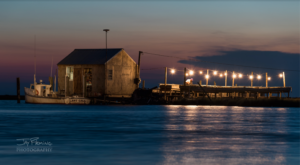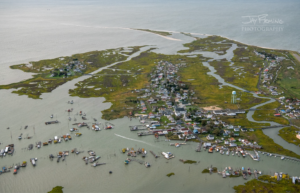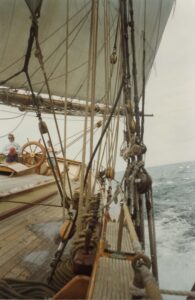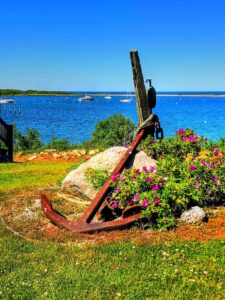When you’re at the Bay and see a man in the water pointing a camera at a net full of fish or capturing the moon rise above a rusty historic lighthouse, it’s most likely to be Jay Fleming. His resolute determination to chronicle life on the Chesapeake Bay has yielded an unrivaled collection of heartwarming and authentic images of the region.
In 2016, his first book, Working the Water, presented a visual narrative of watermen and their communities around the Bay. For his next publication (due October 2021), Fleming narrowed his lens and focused on Smith Island in Maryland and Tangier Island in Virginia. As the last two inhabited Bay islands surrounded by water, both are only accessible by boat and have remarkable stories to tell.
Located 10 miles west of Crisfield, MD, Smith Island’s history dates back to the 17th century when John Smith was exploring the Bay and British settlers were claiming parcels of land for farming. During the 1900s, the island’s population grew to about 800, in sync with the blooming fishing industry, but recent census numbers indicate a dip to 276 residents. Transportation on the island highly favors boats and golf carts above cars, and visitors are welcomed with just-caught seafood and the famous Smith Island cake (eight to 15 layers of golden cake with chocolate fudge icing in between).
To reach Tangier Island, shove off from Crisfield, MD, or Reedville or Onancock, VA, which could replicate the course taken by Pocomoke Indians centuries ago. In fact, when furious storms blow across the Bay, arrowheads and other artifacts wash ashore as proof the tribe once lived here. John Smith was the first European to encounter the island in 1608, and his British compatriots used it as a staging ground during the War of 1812. As external factors came and went, residents spent their time shifting from farmers to watermen as the crab and oyster business became lucrative in the 1900s.
Officially separated by state lines, the two islands have in common a past and present that mark their everyday lives. Both speak a unique dialect that some say is a lingering speech pattern of the early English colonists, while other linguists and historians insist it is a result of isolation.
The tight-knit communities of Smith and Tangier islands also share a love for the water and depend upon it for their livelihoods, yet they realize the relentless tides could wash away their homes. In the past 150 years, Smith Island has lost 3,300 acres of wetlands to erosion and rising sea levels. Tangier Island’s landmass has shrunk by 67% since 1850. Experts predict Smith Island will be completely eroded by 2100; Tangier within 50 years. Land restoration efforts to build jetties and improve drainage offer a glimmer of hope, but the people know it is a race against time and nature. So does Jay Fleming.
After countless trips to the islands, Jay’s photographs paint a precious portrait of the watermen and their wives, families, boats, daily catch, faith, resilience and all the components that comprise their closely woven communities. Marinalife is proud to present his photographs that capture a crucial moment in time for the Chesapeake’s unique residents. For more info, go to jayflemingphotography.com
Article by Susan Elnicki Wade with Photography by Jay Fleming


